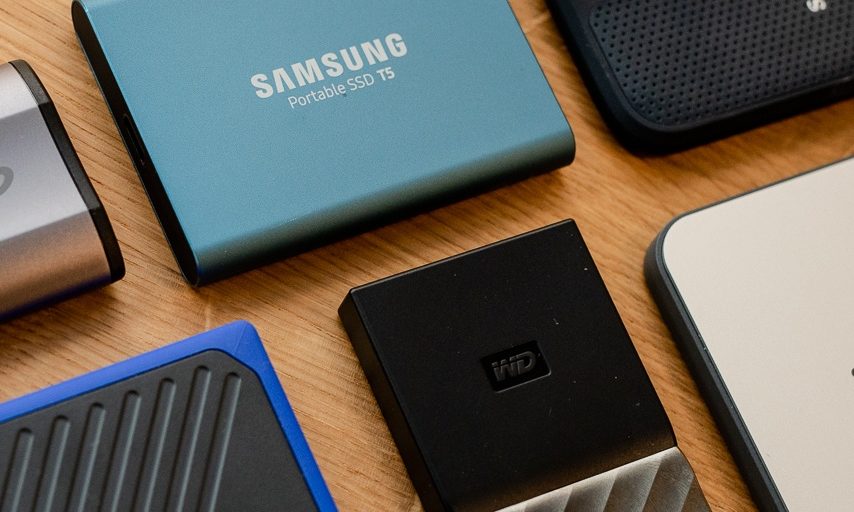The advantages of laptops are obvious: they are lightweight, portable, and almost as powerful as a desktop computer. The great disadvantage? Laptop Space. Internal laptop SSDs generally range from 16GB to 1000GB of storage, which can fill up very quickly, especially if you’re working with large files.
Choose An external SSD is a simple and easy way to add storage to your laptop without having to change your internal drive or delete your valuable data.
How to Choose an External SSD for your Laptop
Creatives, gamers and occasional users can benefit from the additional storage capacity. Here are some factors to consider when choosing an external SSD for your laptop:
Durability
When choosing an external SSD, consider how you will be using the drive. Will you leave it in a desk drawer after transferring your files? Or will he stay in his laptop case on the go, leaping through the turbulence of planes, taking hits on crowded subways, and bouncing off his hip as he moves through the city?
In general, SSDs are better designed to withstand these contingencies because, unlike HDDs (hard drives), SSDs do not contain moving parts. An HDD is based on a rotating disk that may stop working in inappropriate conditions. SSDs are not only more reliable, but also cooler better, offer faster speeds, and produce less noise.
However, that doesn’t mean that all SSDs have the same rugged design. If you plan to transport your SSD, make sure that both the internal and external components of the drive are designed for any possible risk.
The Crucial X8 Portable SSD has been rigorously tested for shock, vibration, X-ray, magnets, and even a 6-foot drop. The anodized aluminum one-piece case can not only withstand difficult conditions, but the internal flash memory has been manufactured with a state-of-the-art process that uses more than 800 operations for protection against contamination.
Recommended: Top 10 Budget Laptops
Capacity
Obviously, it will use the external SSD for additional storage. But exactly how much storage will you really need? Are you going to store some family photos? Or are you going to download 500 hours of movies for a marathon?
Creative users, like photographers and camera operators, will require much more space than casual users. You’ll be able to store entire photo projects on the same disk for easy access and to implement a faster editing workflow. You can also mount projects from a single unit without having to copy any data. Compare this to having to copy data from different drives and consolidate the files on the best monitor for Nintendo switch.
Crucial X8 comes in 500GB and 1TB models, providing ample space for both casual consumers and users who process a lot of data.
Speed
Speed is another important factor in choosing an external SSD. A slower drive can cause hours of lost productivity, not to mention noticeable frustration.
The Crucial X8 has read speeds of up to 1050 MB / s, which is up to 1.8 times faster than most portable SSDs and up to 7.5 times faster than a hard drive.
An important point to note is that your connection is a key factor in how quickly you can actually transfer data to and from your unit. The USB 3.1 Gen 1 interface, for example, has a bottleneck of 300-400 MB / s. Compare this to Gen 2, which has a limit of 700-800 MB / s.
The source and destination of your data, like a slow HDD, will also impact the performance of your external SSD.
Compatibility
If you are going to use your external SSD with multiple devices, you should consider compatibility. Will you be using Mac and Windows devices? So you will need to make sure your SSD can work with both operating systems. The reason for this is that Windows uses NTFS (New Technology File System), while Mac OS uses APFS (Apple File System) as the drive format.
Fortunately, you can partition your drive to be able to use both operating systems, provided your external SSD is supported. If you plan to use significant amounts of data, go for a 1TB drive, as its available space for each operating system is only 50 percent of the drive.
Crucial X8 works with Mac, PC, Xbox One, PS4 and iPad Pro. The X8 has a native USB-C 3.2 Gen 2 interface, as well as adapters for USB-C and USB-A connections.
Security
Security is an incredibly important feature to keep in mind for your external SSD. Without any encryption for attack protection, your data is vulnerable to theft and damage by anyone connecting to your drive.
Crucial X8 works with Windows Bitlocker To Go, as well as Apple’s FileVault, to ensure that your drive is encrypted and your data is secure. You can also use additional endpoint protection from services like Symantec and McAfee.
In addition to encryption, it is also recommended to make sure that your external SSD can be synchronized with file backup services. X8 connects to Windows Backup and Mac OS Time Machine, so you can easily back up your Best Laptops For Lawyers data automatically.
Software
Many external hard drives will include backup software to the disk, which is useful if you don’t have any. But you don’t have to use it if you already have backup software on your PC or a third-party program. Before using the supplied software, check whether it is a full version, a trial version, or a special (limited) version. If it’s a trial version, it may be fully functional but time-limited, or it may be limited in what it can do.
If time is limited, once the trial period has expired, you won’t be able to access your backed up files unless you pay more for the full version. Ideally, your backup software should be able to do a (full) disk image backup, which can restore everything in the event of a drive failure, including the operating system and all programs, as well as your files.
Some backup software also links to online backup services to provide you with automatic off-site backup for less of your most important files as well as a full local backup. This can also be a limited-time option or additional cost. Other software provided on a portable hard drive may include formatting utilities or power management.
Please note that if you are purchasing an external drive for use with a newer Mac, you will not necessarily need additional backup software as MacOS (formerly called OS X) comes with Time Machine backup software. However, this will require the drive to be formatted for MacOS, which can be easily done with the built-in Disk Utility software.





